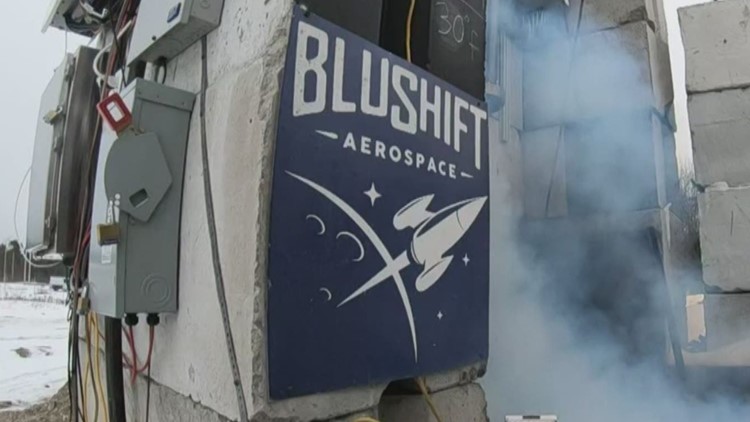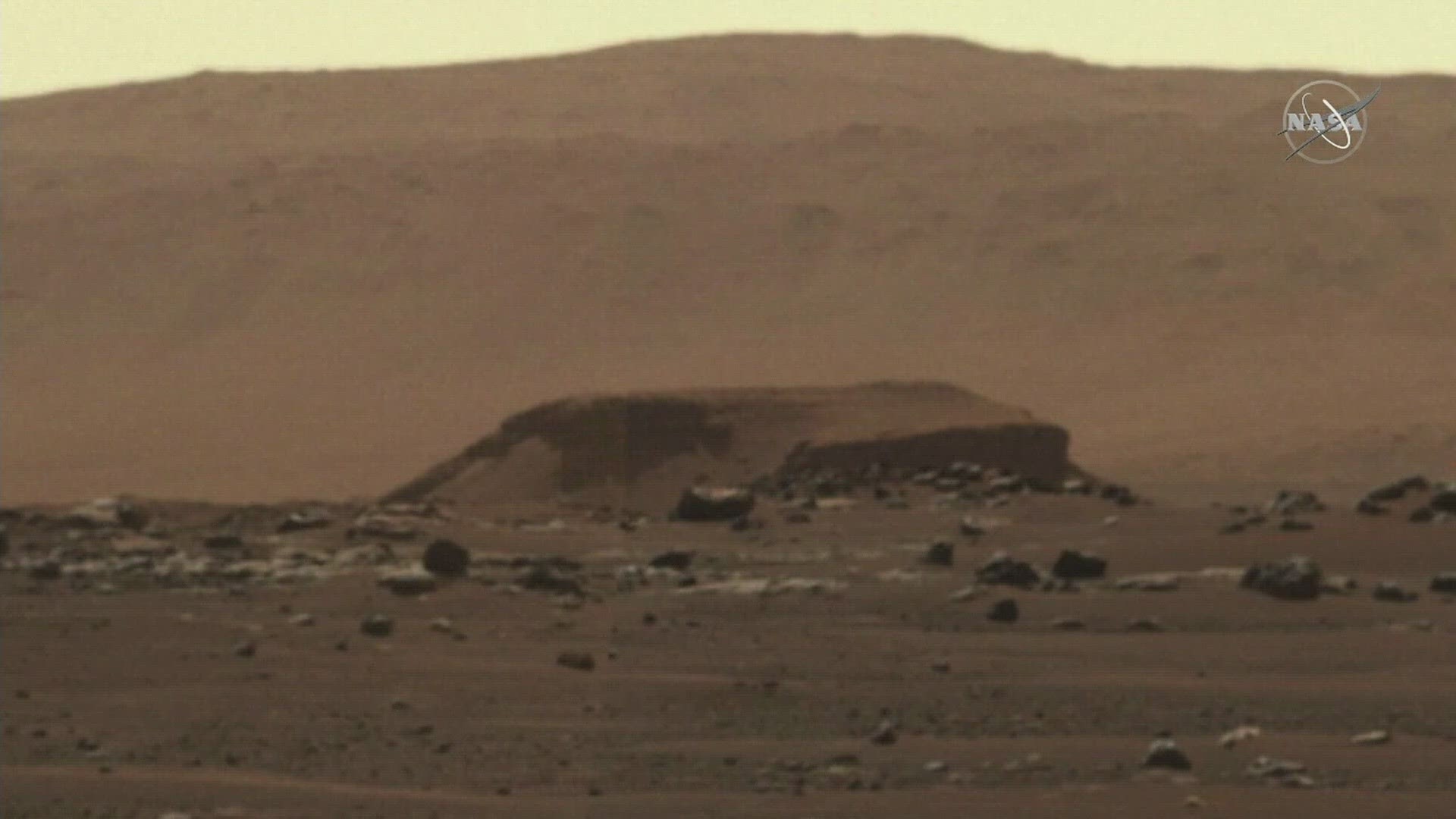BRUNSWICK, Maine — Eager to launch its Stardust 1.0 prototype rocket as soon as possible, engineers at bluShift Aerospace have already repaired damage caused by a leaky seal during a test launch Tuesday afternoon.
The test launch was scheduled for 2 p.m. Tuesday, but it was more than three hours later before the engine ignited and fired at full power for 11 seconds -- just as it will when the rocket actually launches from the former Loring Air Force Base in Limestone early in 2021.
On Tuesday, the rocket's structure remained secured on the launch tower during the test, and the cap -- which will carry the "payload" -- was detached.
The engine -- -- is powered by a bio-derived fuel made entirely from materials that could be found on any farm, CEO Sascha Deri said prior to the test.
After years of research -- including Deri's invention of a bio-derivative engine fuel -- and a $125,000 NASA grant, the start-up company located at Brunswick Landing says its Modular Adaptable Rocket Engine for Vehicle Launch, or MAREVL, is just about ready.
Eventually, the rockets and will send nanosatellites -- or "cube sats" -- into orbit.
The first rocket will carry a variety of cargo, from science experiments to ... Danish cookies known as stroopwafels.
Software design and development company Rocket Insights will fill their cubesat space with the Danish wafer cookies as an homage to its Amsterdam-based parent company, Deri said.
"They've asked us to load up stroopwafel, which is a fine dessert, into the payload section, and we will be launching their stroopwafel up," Deri said.
Falmouth High School science classes will send equipment including a GoPro and a radiotransmitter to collect flight data including acceleration, pressure, temperature and humidity.
Kellogg Research Labs of New Hampshire is testing the "shape memory alloy" nitinol, which Deri says "is akin to [the fictional metal] Vibranium, like Captain America's shield."
The nose cone section, where electronics and telemetry equipment are stored, was not attached to the rocket on Tuesday, but Deri said the equipment was communicating with the rocket and "mission control," the lab about 300 feet away.
bluShift developed the engine over six years, including 200 engine tests. The company hopes to create 40 jobs in the next five years and capture part of what market analysts Frost & Sullivan predict will be $69 billion market for small-satellite launch services.
"There's a lot riding on this moment, and not just for bluShift," Deri said in a release. "Stardust has the potential to launch a vibrant aerospace industry right here in Maine. Our team of staff and investors is aiming high and hoping to create an ecologically responsible aerospace industry with the words 'Made in Maine' on it."



